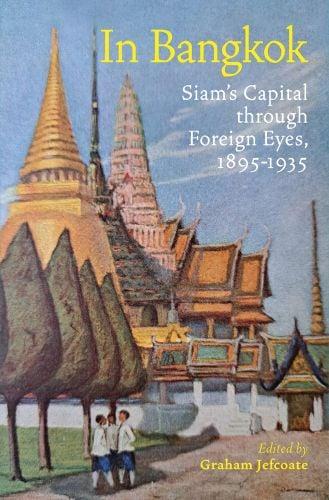

In Bangkok, by Berton Braley
In Bangkok, in Siam, Twelve thousand miles from home, The palms are waving gently Beneath the blue sky’s dome; And brown-skinned smiling natives In groups or lazy throngs Slip by in boats and slim canoes Upon the crowded klongs.
In Bangkok, in Siam, The priests in yellow decked, Go forth upon the city streets For alms they may collect. The little gharry-horses trot Along the paced New Road Where rickshas, cars and tiny trams, Each bear their human load.
In Bangkok, in Siam, They have a pleasant knack
Of chewing scarlet betel nut until their teeth are blackBut though their ways are different, Their manners strange and queer, At heart they’re just about the same As you and me, my dear; In Bangkok, in Siam, Twelve thousand miles from here.
The Popular Magazine, 7 September 1924, pp. 174-175
research, I have used the collections of the Church of Christ in Thailand Archives at Payap University Library; the library of the École française d’Extrême Orient at Chiang Mai; the Damrong Rajanubhab Memorial Library (National Library of Thailand); the British Library; and the London Metropolitan Archives. I would like to acknowledge the help of the staff at all these institutions.
I am extremely grateful to Ronald Milne and Carol Biederstadt for reading, correcting and commenting on the texts in draft. Thanks are also due to many other friends and colleagues, but I should like to make special mention of Rebecca Weldon (for a new translation from the French), Malcolm Ward and David Lawitts (for their help in obtaining material from Britain and the United States), and Lucy Leonowens (who drew my attention to “Zulu” Fyshe’s letter about Christmas in Bangkok in 1908). Translations from the German are by me. Janet Andrew has kindly supplied the index. As ever, Komson Teeraparbwong has supported my research and accompanied me on “field trips” to Bangkok. Finally, I would also like to thank my publisher, Narisa Chakrabongse, for suggesting the book and for her wise counsel, and also the team at River Books in Bangkok and London. Any editorial or interpretative errors are of course solely the responsibility of the author.
Chiang Mai, 2024
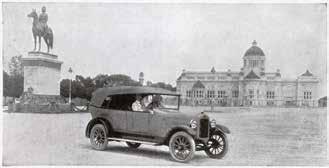
“An Austin Twenty at Bangkok, Siam”, from Illustrated London News, 3 July 1920. The car is parked in front of the Throne Hall and the equestrian statue of the late King Chulalongkorn. This may be the same Austin Twenty pictured in The Tatler in the following year, when the owner was identified as C. G. Cranmer, Assistant Manager, Steel Brothers & Co., “sometimes known as the rice kings of the East”. Mary Evans Picture Library.
In Bangkok
Introduction: Bangkok in the Early Twentieth Century
“What is Bangkok like?” asked an unidentified American missionary early in the century. As we shall find, he or she tried to answer the question by listing impressions (sights, sounds and smells, both pleasant and unpleasant) and by describing the city’s “atmosphere”. Travel writers (and writers of travel brochures) frequently used epithets to characterise the city. Apart from Foster’s “City of the Great White Angels”, those we shall encounter in the book include:
City of Wild Fruit Trees
Venice of the East
City of Klongs
Jewel City of Asia
City of Brilliant Diamonds
City of Palaces and Temples
City of Magnificent Distances, and Heavenly-Royal City.
Some of these became established clichés, but few seem especially helpful in characterising early twentieth-century Bangkok. Other writers described the city – or were obliged to describe it – in less impressionistic terms.
Walter Armstrong Graham (1868-1949) was not untypical of his day, being a British civil servant who spent his entire career in the service not of the British but of the Siamese government. His systematic mind clearly made him the ideal author of the entries on Siam and Bangkok in the celebrated eleventh edition of the Encyclopædia Britannica, published in 1910-1911.1 In the following year, his own, long-awaited Siam: A Handbook of Practical, Commercial, and Political Information appeared
1 Graham, ‘Bangkok’, in: Encyclopædia Britannica, 11th edition, vol. 3 (Cambridge and New York 1910-1911), p. 316 (signed: “W. A. G.”).
When you are down in the Mouth
Think of Jonah He got out all right So did
The Bangkok Manufacturing Co. OUT OF THE FIRE
With a full stock of ICE, AERATED WATERS AND FROZEN MEAT.
Advertisement in The Bangkok Times, August 1910
B.M.C.
IN STOCK TODAY: -
FISH: Smoked Blue Cod, Smoked Murray Cod, Codroe Caviare
CHEESE: Australian, Stilton
HAM: Boiled Ham on cut, Raw (ditto), French (ditto), Breakfast Bacon Snipe (from time to time), Beef Dripping, English Margarine, Turkeys Fresh Australian Butter and Finest Australian Pure Butter in 3/4 lb. Tins.
Picnic cases containing Ice, Aerated Water and Well Water for travellers by Railway or boat. Delivered free at Railway Station or any Bangkok landing.
Advertisement in The Bangkok Times, 13 February 1918, p. 4
In Landon’s novel, Mr Denniscort brings supplies from B.M.C. to tempt the convalescent Angela’s appetite.
Mr. Denniscort took the napkin from the basket with a flourish. “The manager at the B.M.C. helped me pick the things out,” he explained. “I bought a leg of lamb for broth.” India melted with suppressed laughter. “Goodness!” she said weakly, thinking of the extravagance of lamb from Australia at five or six dollars for broth!
“And here’s lettuce and celery. It came from San Francisco, so it’s perfectly safe. The manager said if you’d wrap it in a damp cloth and keep it in the refrigerator it would stay crisp a week.” India felt her amusement tempered with awe.
Landon, Never Dies the Dream (1949), pp. 155-157
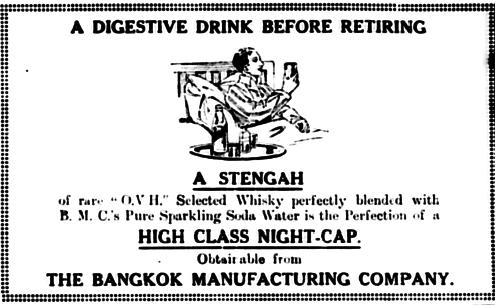
Advertisement in The Bangkok Times, 15 January 1926, p. 2.
Protect your health. Enjoy the convenient servant which needs no watching or care … the modern Frigidaire automatic refrigerator. It protects health by stopping food spoilage … halts the rapid growth of dangerous mould and bacteria … makes ice for cooling drinks … and frozen salads and desserts. Let us show you a Frigidaire in operation. Come in any time. The Anglo-Siam Corporation, Ltd. Siam Electric Corporation. Butler & Webster.
Advertisement in The Bangkok Times, August 1929
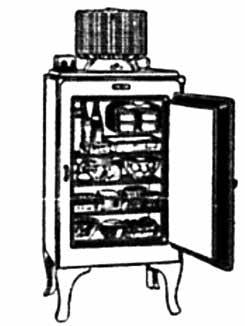
From and an advertisement for a General Electric refrigerator in The Bangkok Times, June 1931.
The City of Magnificent Distances
It is a distinctly modern city, laid out on a most pretentious scale with numerous public squares and several wide avenues flanked with rows of trees. So great are the distances one wonders how the business of the city was carried on before the advent of motor cars with which the dusty streets now swarm. Cravath, Notes on the Cruise of the Warrior (1928), p. 121
Bangkok has been described as “The city of magnificent distances,” which is another way of saying that it takes half an hour to get anywhere.
Garstin, The Dragon and the Lotus (1928), p. 304
The town is one great maze through which one rushes in motors without ever gaining the least idea of the plan.
Candee, New Journeys in Old Asia (1927), pp. 155-156
The streets of Bangkok are crowded with vehicles of every description – ramshackle and disreputable rickshaws, the worst to be found in all the East, drawn by sweating coolies; the boxes of wood and glass on wheels, called gharries, drawn by decrepit ponies whose harness is pieced out with rope; creaking bullock carts driven by Tamils from Southern India; bicycles, ridden by natives whose European hats and coats are in striking contrast to their bare legs and brilliant panungs; clanging street cars, as crowded with humanity as those on Broadway; and motors of every size and make, from jitneys to Rolls-Royces.
Powell, Where the Strange Trails Go Down (1921), p. 220
The procession of man-hauled vehicles, ox-carts, and petrol-driven machines forms a striking and unforgettable combination of ancient and modern transport. For its better regulation, there are now white lines, and the constables stand on point duty in raised concrete and iron islands, which prevent them from being run over, and automatically divide the traffic into two fair-ways.
Forty, Bangkok (1929), pp. 25-26
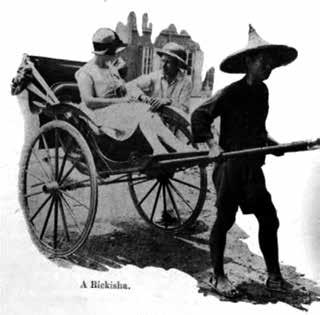
Street Conveyanes and Fares in 1909. . .
From Seidenfaden, Guide (1927).
Apparently there is no tariff governing these street conveyances; however, it is customary to pay as follows:
Short ride, say fifteen to thirty minutes, ½ Tical, full hour 1 Tical, and each subsequent hour or part of an hour 2 Tical. Owing to the roughness of the roads, and great distances from place to place, the traveler is advised to in all cases take a carriage.
The best horses, carriages and drivers are to be procured at the livery stables of Mr. Nai Lert, situated on the New Road.
Perkins, Travels (1909), p. 261
The streets were unpaved and dusty though partially lit by electric lamps. Electric trams – the carriages of which were always full to overflowing – provide the means of transport through the main streets. The European can hardly make use of them, however, nor the dirty rickshaws. He is obliged to hire a two-horse gharry at one of the many stands. That is tiresome, and in the long run, expensive too. The great distances and the heat mean that one is always looking for a means of transport. If spending the evening in society or at the club, one often turns up several hours late.
Wilda, Reise auf S.M.S. “Möwe” (1903), p. 277
An Up-to-Date Building for Business
The Borneo Company Limited (BCL) was a general trading company incorporated in London with branches in Bangkok (established 1856) and Chiang Mai. Its operations in Siam included banking, insurance and shipping; the export of rice and hardwoods (especially teak); and the importation of automobiles, engineering equipment, petroleum and numerous consumer products. It acted as local agent for overseas companies, a list of which covered several pages of contemporary commercial directories. Work on a representative new Bangkok headquarters began in early 1924.
The Borneo Company, Limited. (Incorporated in England.)
Head Office – 28, Fenchurch Street, London, E.C. 3
BANGKOK BRANCH
Rice & Timber Merchant.
Textiles, Metals, Machinery & General Importers. Telephone
“Borneo” – 6 Lines
General Manager for Siam –A. R. Malcolm. Forest Manager – R. W. S. Ogle Commercial Engineering Department. Saw Mill. Borneo Wharf. Banking. Lloyds, Shipping. Fire Insurance, Life Insurance, Motor Car, Personal Accident, Burglary and Plate Glass Insurance. Bangkok Directory (1930), pp. 350-351
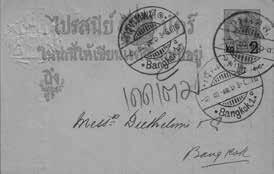
A pre-printed card dated 3 June 1907 in which the company informs the merchants Diethelm & Co. that goods they had ordered have arrived from Singapore on the Nuen Tung of the East Indian Steamship Co. (Bangkok). This happens to have been the ship which brought Reginald Le May to Bangkok in the same year. The Editor’s Collection.

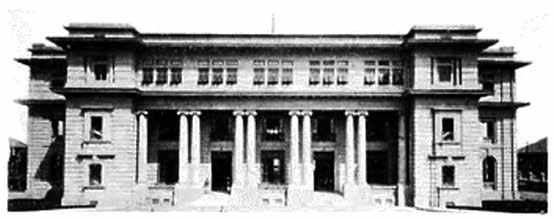
Business premises in Bangkok conforming in style and size to the importance of the port are rare. The handsome building in course of construction by the Borneo Company at Bantawai therefore is not only a matter of interest to the company. The building is a three-story structure constructed in ferro-concrete and brick throughout so being entirely fireproof. The methods of construction are entirely up-to-date and in many respects unique, being designed to obtain the best use of materials and labor conditions available in Bangkok. The total length of the building is about 200 feet and the height over 50 feet, the lower floor being about 19 feet. The exterior is treated in free Renaissance style, the main portico being composed of a colonnade of double Ionic columns running through the height of the first two stories. The orientation of the building is so arranged that the fullest advantage is gained from the prevailing hot season winds and the sun passes over the long axis of the building, so avoiding excessive heat from this source, in the working portions of the office. The interior consists mainly of a completely open space covering almost the whole area of the building, at floor, together with necessary offices, lavatory spaces, strong rooms and staircase spaces. The staircase wells at each end of the building are provided with Waygood-Otis electric lifts, serving all floors of the building.
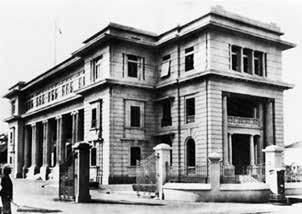
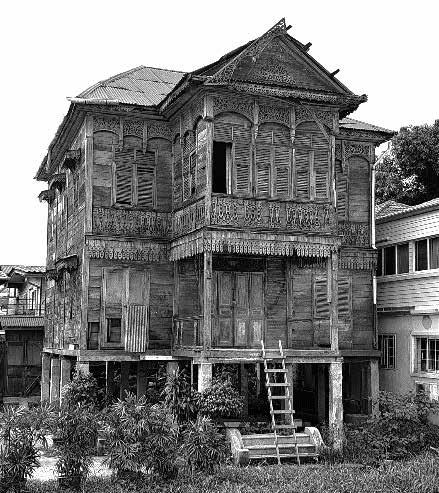
Louis Windsor’s house (“Baan Windsor”) was “located in a small Catholic community in Kudeejeen” on the river in Thonburi near Santa Cruz Church (Bangkok Post, 17 January 2016). According to local information, that house was demolished long ago; the “gingerbread house” which remains on the site (and is in need of restoration as of 2024) was brought at a later date from a different location. Photograph: The Editor.
Mr. Marican
MOONA THABISAUBOO MARICAN (M. T. S. MARICAN) Diamond and Cloth Merchant and Commission Agent, General Importer and Exporter.
2615 & 2617 Rachawongse Road, BANGKOK.
The firm of M. T. S. Marican was founded by the late Mr. Moona Thabisauboo Marican of Karikal, French India. During the latter portion of the nineteenth century, M. T. S. Marican began his business career in
dealing in diamonds, precious stones of Siam and other gems, and by his perseverance and keen business methods, worked up quite a large trade in Bangkok.
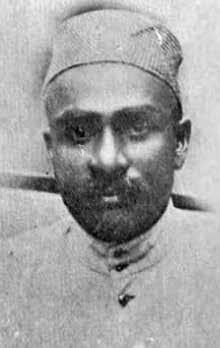
Subsequently, he opened the piece-goods line and established the business on a small scale in Wat Koh Street, and in addition thereto he founded another firm in the same line in Rachawongse Street, which was then newly opened. At these two places, all sorts of woollen, linen, cotton and silk are being imported from all parts of the globe. Mr. Merican deals very considerably too in English flannels, velvets, serges and cottons and other fancy goods. The goods are always sold wholesale and also enormous supplies are furnished to the Siamese military department, whenever required. The Wat Koh branch conducts retail business also. Mr. Marican does a vast business in piecegoods, in which he stands first among the Southern Indian community here. The late founder died at his native place, Karikal, in August 1924. His only surviving brother, Mr. Moona Kader Moheideen Saiboo Marican, and his son-in-law, Mr. Seena Kader Moheideen Saiboo Marican, are now the proprietors of the firm. Mr. Marican’s name and reputation has stood in Bangkok, the Straits Settlements, Karikal, in French India, and also many places in British India, for the last thirty years or more.
Siam from Ancient to Present Times (1926), pp. LXXXVI-LXXXVII
On Tuesday, I went to a bank, found it open, and drew money with which to pay my obligations, both at Singapore and at Bangkok. I had selected an antique ring from an assortment shown me by a Mr. Marican, a dealer at Bangkok, telling him that I had no money and could not then get any on account of the bank holidays, but that I would remit as soon as possible, so that he could send the ring to me. Again my “face” was good, showing what a wonderfully good “face” I had, for he insisted on my taking the ring anyway, saying I could pay later. I sent him the money from Singapore.
Bent, Tales of Travel (1924), p. 269
With advisers of many nationalities often giving conflicting counsel, it was plain how the Siamese had been pulled first in one direction and then in another, all efforts lacking coordination. They had developed into a set of apologists, and were constantly confronted with the necessity of giving the least offense to those whose advice they did not accept. The game of the different legations was to have their nationals appointed to office. The amount of intrigue and countermoves that went on backstage was unbelievable. The community presented the picture of a few whites quarreling among themselves, and a huge native mass that did not know what it wanted.
Heiser, A Doctor’s Odyssey (1936), pp. 484-485
The services rendered by all of these counsellors to Siam have been conspicuous, and without their aid the Siamese monarchs would certainly have been unable to carry out their successful policy of depriving Western Governments of any excuse for intervening in the internal affairs of the country. In recent days, however, the tendency of the Siamese Government has been to rely less and less upon the counsel of the advisers, and for a long time past the custom has been discontinued of appointing foreigners to executive positions.
Crosby, Siam (1945), p. 37
Legations and Consulates
Foreign governments were represented in Bangkok by Legations headed by Ministers or chargés d’affaires. The latter sometimes doubled as Consuls, though Britain maintained a separate “Siam Consular Service”, a service which (confusingly) also covered the Dutch East Indies and French Indo-China. Only after the Second World War were Legations made into full Embassies headed by Ambassadors.
Almost every nation has its consular representative. Consular Bangkok is distinguished by its verandahed houses, its club, and tennis and cricket grounds. The palm and the bamboo dominate the gardens, and the note is of the higher civilization, the civilization of hot and cold baths and electric light. Here the Stars and Stripes are conspicuous, and the Tricolor floats in the breeze. The Union Jack is unfurled side by side with the national emblems of Denmark and Germany; Italy runs up its red, white, and green in friendly rivalry with the yellow of little Holland.
Frankau, Let the Roof Fall In (1910), p. 213
Very soon the Legations will abandon the river side, fly from the noise and reverberation of the water, the evil smells, and the excessively costly ground, and take refuge in a new and more sanitary quarter. How we shall miss our old Legation then, with its old fashioned colonial design, its modest enclave of French territory planted with banyans and bougainvillias and a one-hundred-seventy-five-foot mast flying our colors in the midst of the croaking of toads and bullfrogs!
Morand, Nothing but the Earth (1927), p. 105
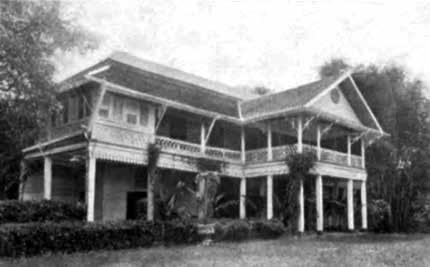
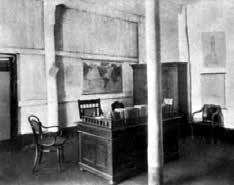
“In this dilapidated building are the offices of the American Legation and Consulate” and “American Consul’s Office in Bangkok. Note the furnishing”. From Perkins, Travels (1909), p. 264.
most complaisant member of the association usually assumed the invidious task of “running” the household; that is to say, writing the “chits” to the stores for orders of groceries necessary; doling out the market-money to the cook, or fining the coolie for not sweeping the verandah clean; and at the end of the month, paying the bills, and subsequently recovering the proportion of the total expenses from each member.
In 73 they took these tiresome duties in turn, each fulfilling them as badly as a mere man might have been expected to do in such un-masculine conditions. Just before Harkness’ arrival the Mess bills had been mounting up. Living is atrociously dear in Bangkok, house-rent so high, and servants are paid such inflated wages that a bachelor as a rule finds it beyond his means to maintain a separate establishment. That being so, the reason for two or three men chumming together in a single house is evident, and the result is a reduction of household budgets to reasonable dimensions.
“No. 73,” accordingly, Harkness joined. The members consisted of Santall (already described), Garstin (of the Mines), and the lively little Frenchman, Jean-Marie Nempont, who lent a touch of sprightly colour alike to the Mess and to the Local Sanitary Board, to which he was more or less attached. These four men in the employ of the Siamese Government, and chosen for various reasons and various qualifications to “advise” a young nation in the way it should go towards the high ideals of European administrative methods, inhabited a large, wooden two-storey and very typical Bangkok house. A mass of pink and white Honolulu creeper did its best to cover and subdue the garish blue with which this edifice was painted; but apart from that, the house possessed compensations of convenience in its nearness to the business centre of the town and to the Clubs, and of airiness derived from a detached situation in a decent sized “compound.”
Reid, Spears of Deliverance (1920), pp. 18-20
Williams describes service at the Chummery before the Great War …
The food was good and the service, under the direction of the whitehaired Chinese butler, excellent. All the “boys,” many of whom of course were middle-aged, wore spotless white duck suits with high-buttoned collars, and the lower ends of their trouser legs were tucked into white socks and kept in place by a broad band of black elastic silk. No ankle
Bangkok
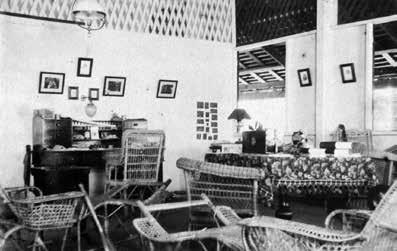
scratching for them! A pair of black velvet Chinese shoes with silent rubber soles completed their neat and unobtrusive outfit. These tactful and efficient “boys” are a class by themselves, and mostly come from the island of Hainan in southern China, whence they take service all over the Far East. How many a returned Easterner sighs in vain at home for their quiet industry and incomparable ubiquity! How they spoil their masters for anything but the life of a millionaire! Do you arrive home for dinner from the British Club three-quarters of an hour late and with two or three unexpected guests? It does not matter. There is no fuss, bother, confusion or black looks. The head “boy” merely whispers, “Cook he say please Master give him five more minutes.” Time for a round of sherry, and the company sit down to a meal perfect in every respect, with no sign whatever that it is nearly an hour late and was originally prepared for two instead of five!
Williams, Green Prison (1941), p. 18
TO BACHELORS
ACCOMMODATION FOR ONE BACHELOR, BRITISH, IN MESS.
Well-furnished and comfortable house, garage etc.
To pay PROPORTIONATE SHARE OF EXPENSES, about TCS. 250 odd per month, everything included.
Apply, B. B.
Advertisement in The Bangkok Times, 19 July 1922, p. 6
The interior of a house, probably Bangkok ca 1895. From an Ainslie album.
came to the Consular Office and asked me to register him as a British subject. He had no evidence whatever to show that he really was a British Subject, but he clearly thought that he had placed me under such an obligation, by giving me back my own vase, that I could not decently refuse his request.
Wood, Land of Smiles (1935), pp. 29-30
In September 1925, Raymond Clément Plion-Bernier (1902-1993), a young French diplomat who had just arrived in Bangkok accompanied (rather unusually) by his mother, reported the theft of jewellery (presumably Mme Bernier’s) from his room at the Trocadero Hotel.3
On the 10th inst., Mr. Raymond Plion, Student Interpreter of the French Legation, informed the Bangrak Police that jewellery to the value of about Tcs. 500 had been stolen from his room at the Hotel Trocadero in Suriwongse Road. He suspected a young Siamese boy to whom he had given some biscuits earlier that day. On the police moving, some of the articles were found in a pawnshop. The small boy was also found, and he said he got these things from a man to pawn for him. This man, whose name he gave, had been called away to Potaram on business. Two police officers were promptly despatched to Potaram and got their man out in the country, in the Commune of Chet Somian. He was still in possession of some of the articles stolen. Quite smart work.
The Bangkok Times, 15 September 1925, p. 4
Virtuous Bangkok
Lt.-Col Forty, now retired, felt that Bangkok had become more “virtuous” by the late 1920s. Nevertheless, some ten years later, Virginia Thompson, still found “the red-light district - green in Bangkok – very extensive”, observing that “many religious leaders have called the Siamese capital a spiritual morgue” (Siam, p. 687).
The huge gaming houses, in former days one of the most remarkable sights of Bangkok, no longer exist. Gambling is now prohibited by law. But in spite of every effort to stop it a certain amount continues, for the Siamese
3 Mme Bernier also accompanied her son when he was posted to cover for the French consul at Chiang Mai, but died there after what seems to have been a stroke.
In Bangkok
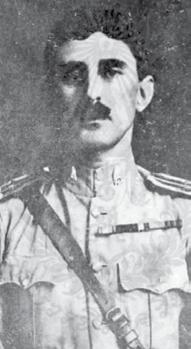
are by nature fond of all games of chance. Nearly opposite the spot where the largest of these establishments stood is a large collection of pawnshops.
Bangkok from a moral point of view compares favourably with other capitals, and when contrasted with the great Eastern ports might even be described as virtuous. Solicitation is severely discouraged, and there are none of those whining touts and pimps who pester the stranger to buy their filthy photographs or to accompany them into diverse haunts of sin. The flaring bars, with their tawdry sordid women, once to be found in profusion near the foreign legations, no longer exist. Departed also are the white slavers, callous and furtive brutes, who regarded the unfortunate females who kept them as animals to be beaten, bought, sold, exchanged or gambled for as circumstances dictated. Public opinion, the abolition of extraterritorial privilege, passport regulations and other exigencies caused by the Great War, all aided in wiping out an industry which at one time flourished exceedingly.
Visitors to Bangkok who expect to find the hectic scenes of vice and depravity sometimes described by novelists as the usual things of the East will be agreeably surprised at their absence, or chagrined as the case may be. But as elsewhere reasonable provision is made for all the wants of the stranger within the gates. Opportunities if wanted can be found for indulging in the night-out, binge, or jag, which even the oldest and steadiest-looking traveller sometimes feels himself entitled to.
Forty, Bangkok (1929), pp. 32, 38-39
Bangkok is said to be a moral cesspool, but I do not think it is worse in this respect than other metropolises in the East and Europe.
Pasqual, A Trip: Through Siam (1925), p. 57
vote of the committee. They had to pay an annual subscription of twenty ticals, and the friendly intercourse thus established on neutral ground was one of the great benefits derived from that institution.
Twentieth Century Impressions of Siam (1908), pp. 248-251
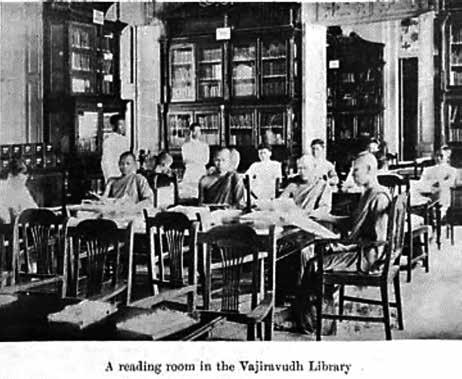
At first the library had its place inside the Grand Palace, but as the collection of books and manuscripts grew bigger the demand for more spacious premises became imperative, and in 1917 it was transferred to the building in front of Wat Mahathad. This building now houses the department of Printed Books which is called the Vajiravudh Library in memory of H.M. King Maha Vajiravudh or Rama VI, whose collection of books was, after His demise, handed over to the National Library. The public have free access to the Vajiravudh Library and can make use of several reading-rooms, one of which is specially reserved for the readers of newspapers and magazines, both Siamese and foreign.
Seidenfaden, Guide (1927), pp. 189-190
During the Presidency of His Majesty the present King, the need for book-cases was strongly felt, but as sufficient funds were not available, it was decided to apply to the Abbots of a number of temples for gifts of some of the cupboards lying useless in their charge, and to keep them
332 In Bangkok
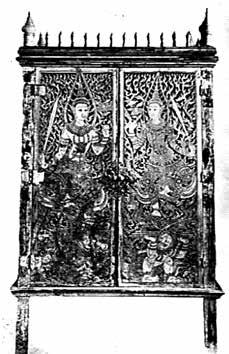
in the Library as national property. When the Abbots saw how beautiful their cupboards looked, when carefully cleaned and properly kept, they became more and more willing to part with them for the benefit of the Library, which now possesses over three hundred of these book-cases forming a most interesting and representative collection of this branch of Siamese art.4
Cœdès, The Vajiranāna National Library of Siam (1924), p. 14
BANGKOK LIBRARY
Over Falck & Beidek’s Godowns
Open daily (Sundays excepted)
From 4 to 6.30 p.m.
Advertisement in The Bangkok Times, April 1909
Neilson Hays Library
Suriwongse Road
Open Daily, 9. to 12.30 and 4.30 to 7 p.m.
Subscriptions: – 1 month, Tcs. 5, with 5/. deposit on each book. Subscriptions include use of reading-rooms, reference-books, and British and American periodicals.
Apply at the Library or to Mrs. E. E. Groundwater, Hon. Treasurer. Advertisement in The Bangkok Times, January 1926
Bertha McFarland writes about the Neilson Hays Library …
For over thirty years I have been a member of the committee of women managing the Neilson Hays Library, a private subscription library that has
4 See above (The King’s Birthday) for Wheatcroft’s suggestion that Siamese music had “much analogy with the beautiful designs on the lacquered bookcases in the National Library”.
Pursuits
